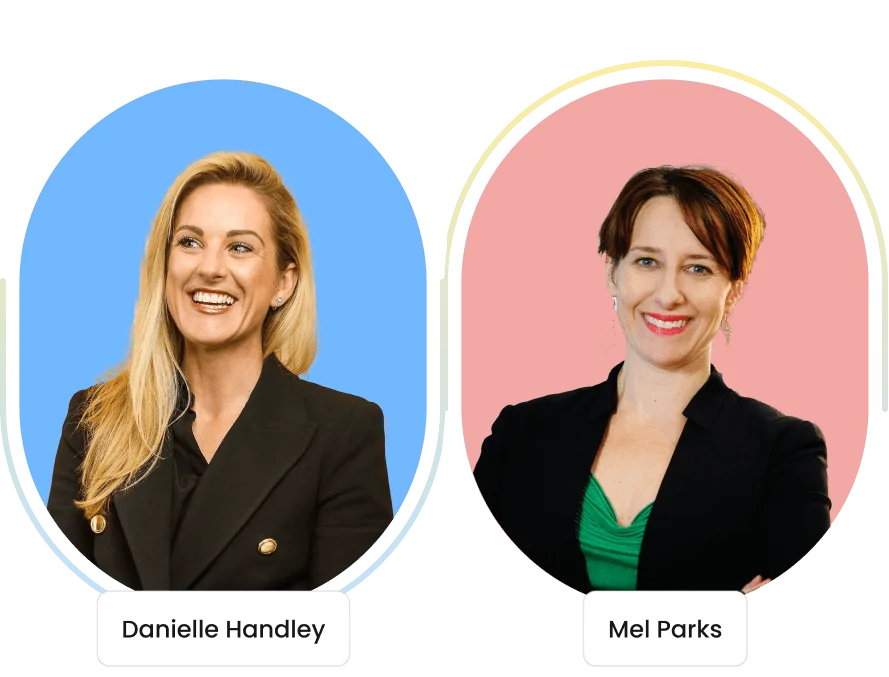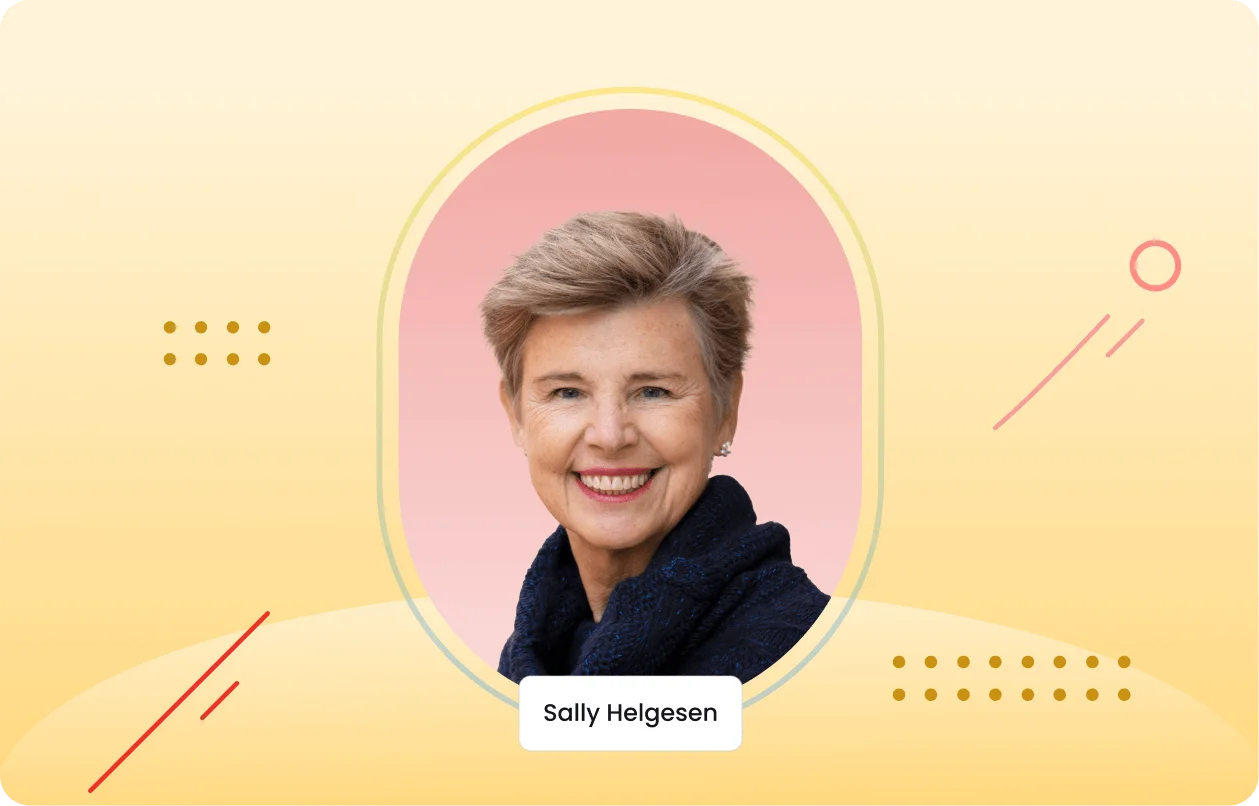By bringing a personal and pragmatic perspective beyond the data, women are leading a new wave of innovation in artificial intelligence
Women are spearheading a revolutionary change in different industries by utilizing the power of artificial intelligence. These torchbearers come from diverse backgrounds: entrepreneurs, academic researchers, industry specialists, or venture capitalists. What binds them is their commitment to carving out a viable path for future generations and shaping the future of technology. They represent and inspire young female leaders striving toward success!
Sangeetha Chandru, Chief Practice Officer of Retail at Fractal, has more than two decades of experience leading transformation in the retail industry, both within organizations and as a consultant. During that time, she has seen how data has been at the heart of every organizational transformation.
“The work that’s happening in AI today may seem inaccessible to the layperson, but at the very heart of it, it’s a very pragmatic approach to solving some of our most complex problems,” Chandru said. “Essentially, AI brings unprecedented computing speeds to convert huge volumes of data into something we can use to make decisions. And this transcends the technical environment and feeds into every aspect of the retail business. It’s about democratizing data, and women are at the forefront of that.”
Women – including in Chandru’s team, work at every level to drive insights. They are helping organizations structure their data, solving bespoke functional problems in marketing, supply chain, or technology, and leveraging AI to disrupt and innovate their businesses.
Meanwhile, AI is rapidly transforming our data landscape thanks to reporting mechanisms, self-serve capabilities, and other tools that empower many users to make decisions. These have created newer career paths that women leaders across distinct roles and industries are leading in a way that was impossible ten years ago.
One of those women is Danielle Handley, APAC (Asia Pacific) Customer Director at Bupa. Handley is an experienced leader in enterprise strategy and innovation in the financial services sector. Now, she focuses on how AI can help Bupa understand its health insurance customers and shape their healthcare experience.
“Ultimately, we need to figure out how best to leverage AI to wrap the right advice and suggestions around each customer to meet their needs. For example, how can AI help me apply science and predictability in decision-making to guide our customers to the right pathways across their lifetime health journey? How can we use it to provide the data in a consumable way that is personalized for that customer, based on where they are in their health and well-being journey?”
Answering these questions takes an inquisitive mind and an open attitude to the possibilities that technological advances bring.
“Wherever we can use AI to do tasks like day-to-day information capture or taking payment, we are also creating capacity for our teams to have human-to-human conversations with customers where emotion and judgment are required. There are some exciting advances in AI, such as conversational AI, which can help us remove friction, especially from the front end of the customer experience.”

Danielle Handley
APAC (Asia Pacific) customer director, Bupa
Handley combines a strong vision of what she wants to achieve with the flexibility to embrace new developments and the possibilities they create. So, what is her key advice for those who want to follow in her footsteps?
“Don’t be afraid,” Handley said. “Be curious about the data and how it can be used, and constantly challenge the what-if scenarios. I am not a data scientist; I do not develop the logic behind AI, but I always ask those questions and then rely on my team’s amazing brains to put the data to work. By constantly exploring and challenging the scenarios around AI, we can unlock new possibilities.”
Mel Parks is the Chief Operating Officer of Save the Children Australia and has previously led complex change for financial services organizations. She sees great potential for ethically applied AI and analytics to support better decision-making, boost productivity, and improve stakeholder outcomes.
“One of the big challenges for leaders is to foster a dialogue about opportunities for the application of advanced technologies,” Parks said. “The sweet spot is identifying use cases and thinking about what toolsets will enable maximum impact. If you don’t have leaders who can think about how those elements come together, it doesn’t matter if you have the world’s best technology or problem statement.”
Mel and the team at Save the Children Australia are exploring how to best use AI in their work. For instance, AI-enabled image detection could help identify children at risk of malnutrition, especially in locations difficult for medical professionals to reach. Predictive models could help users of the organization’s Library For all businesses, providing experiential, real-time tools to improve children’s learning capability on basic literacy or numeracy. And while Save the Children Australia focuses on meeting children’s basic needs like health and education, Mel believes technology could also help their happiness.
“We are increasingly working on climate adaptation in partnership with communities throughout the world, and we know that children are rightly very concerned about the climate crisis. AI models that predict climate implications and help us undertake the right interventions in communities will benefit the environment and could even help to reduce climate anxiety in children. If we get that right, I hope children’s overall well-being will improve too.”

Mel Parks
Chief operating officer, Save the Children Australia
Mel’s path to senior leadership has seen her become an empathetic advocate for upcoming leaders.
“There are micro-interventions that I do as a senior female leader that I would have liked somebody to have done for me when I was coming up as a leader,” Mel said. “For instance, I encourage emerging leaders to take on broader roles and try to create opportunities for quiet or less confident voices to be heard, particularly younger women or people from culturally and linguistically diverse backgrounds.”
Mel has two key pieces of advice for women aspiring to leadership positions now.
“It’s critical to understand what is important to you and to work in a way that aligns with your values,” Mel said. “When that happens, it shows in the way you lead. In addition, it’s important to approach risks – including career opportunities – focusing on what you might learn, the skills you could gain, and how the experience can help you be a better leader. If you do those two things well, people will engage with and follow you, and you will learn from each other.”
It has taken grit for many of today’s women leaders to get to the top and stay there. For decades, girls and women were discouraged from studying science, technology, engineering, and mathematics (STEM), which were regarded as masculine. And in the workplace, inflexible routines can make it challenging to combine a career with commitments like raising a family – causing some women to self-select themselves out of career opportunities before they reach the top. And fewer women leaders also meant less representation to chart a path for the next generation.
But that picture is gradually changing. Women like Chandru, Handley, and Parks show future generations what they can achieve in STEM fields. Technology leaders, governments, and educators are running programs to encourage and mentor girls and women in STEM education, from elementary school to university level – and their efforts are starting to pay off in the workplace. Meanwhile, organizations are introducing flexible policies that allow a healthier balance between work and family.
Many companies now provide for and support those who have taken a career break as they return to the workforce. Fractal’s gender-agnostic ReBoot program is one example. It has enabled many women to develop new technical and professional skills, work closely with industry experts and expand their networks.
“When women reach leadership positions, we must turn around and clear the path for others. A huge focus within my practice is on creating the right platform to nurture women’s talent so that they will take on leadership roles within Fractal. By ensuring women know they have a path for growth and success, we are beginning to see the potential of an inclusive STEM community – and better business outcomes.”

Sangeetha Chandru
Chief practice officer of Retail, Fractal








